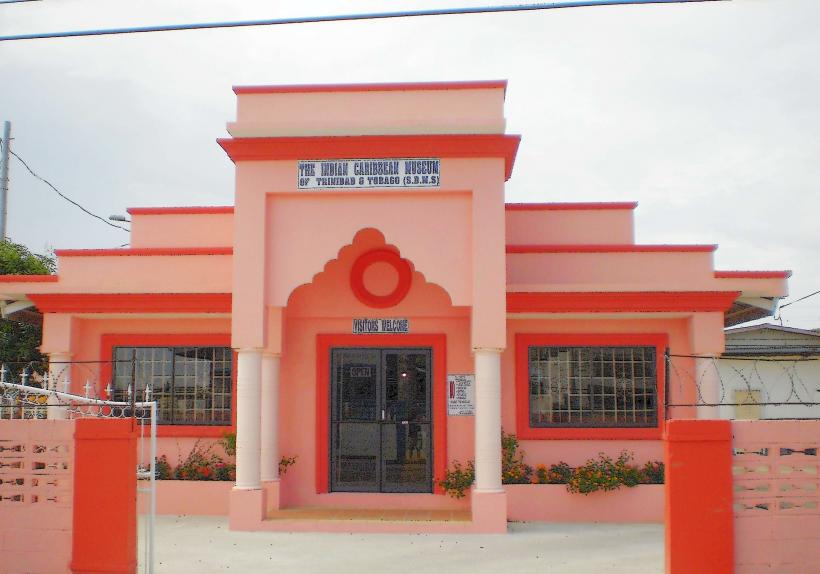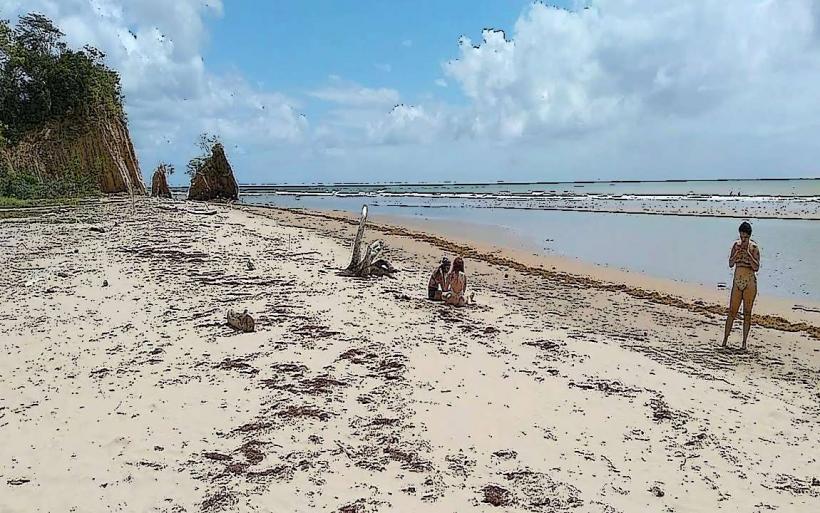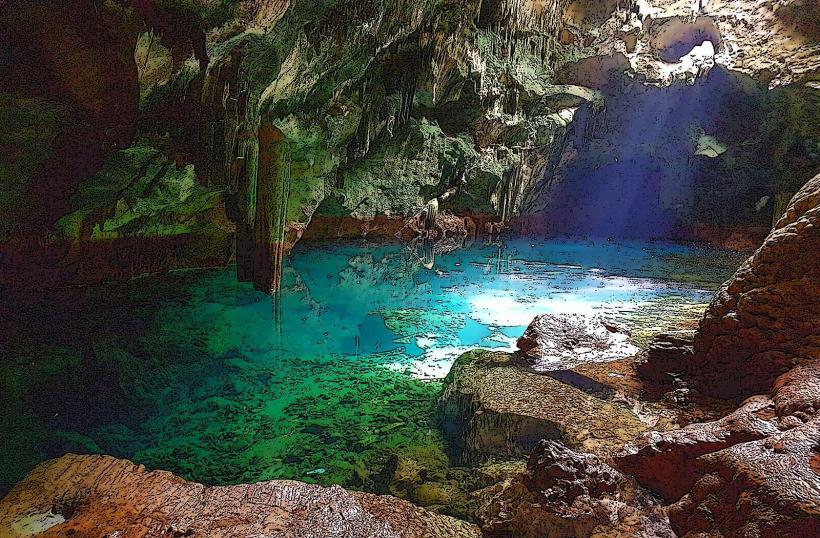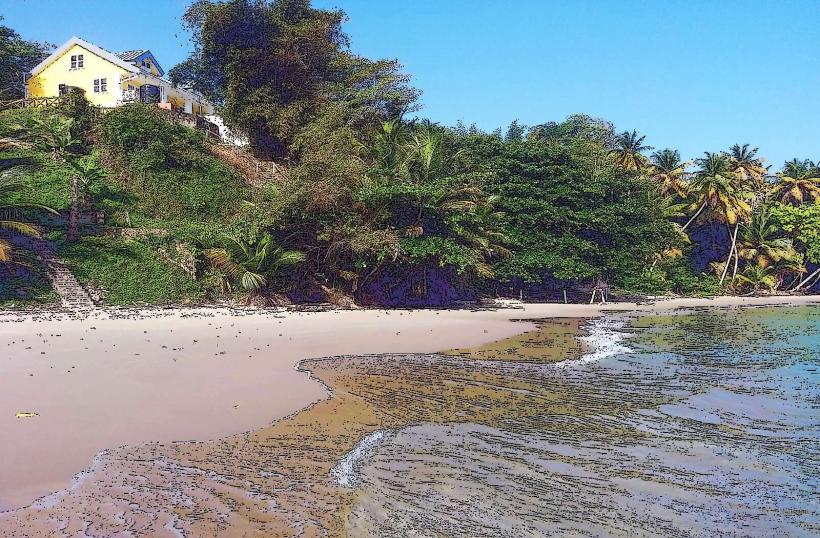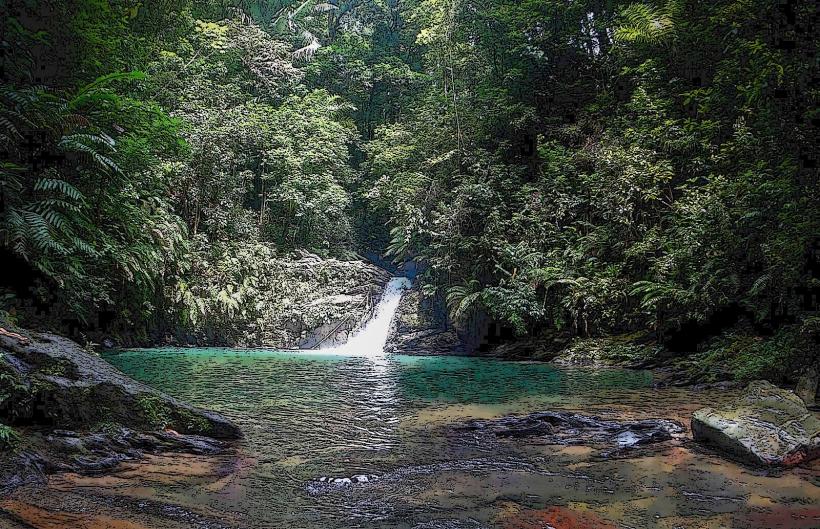Information
Landmark: Devil’s Woodyard Mud VolcanoCity: Princes Town
Country: Trinidad and Tobago
Continent: North America
The Devil’s Woodyard Mud Volcano is a unique natural feature located in Trinidad, specifically near the southwest region of the island, in the area of Icacos. This mud volcano is one of several in the country, but it is particularly notable for its location, appearance, and the myths surrounding it. Like other mud volcanoes, it is an intriguing and rare geological formation that draws attention due to its unusual landscape and the natural processes occurring within it.
1. Geological Formation
- Mud Volcanoes are a type of volcano that erupts mud, water, and gases rather than molten lava. These formations are caused by the movement of underground fluids, including oil, gas, and water, which push mud to the surface. The pressure creates small eruptions that send mud and gas upwards, sometimes creating bubbling pools and forming mounds of mud.
- The Devil’s Woodyard Mud Volcano is one of Trinidad's active mud volcanoes, characterized by frequent minor eruptions and a distinctive, eerie landscape. The name "Devil’s Woodyard" reflects the mystique and legends associated with the site, contributing to its folklore.
2. Location and Setting
- The Devil’s Woodyard Mud Volcano is located near the village of Icacos, which is in the southwestern part of Trinidad. It is part of the Southwest Peninsula, an area known for its natural beauty and proximity to the Caribbean Sea.
- The surrounding region is primarily rural and agricultural, with small villages and communities nearby. The area also has tropical forests, wetlands, and other natural landscapes that are rich in biodiversity.
3. Appearance and Features
- The Devil’s Woodyard Mud Volcano is a mud-filled pit or mound, where bubbling mud erupts intermittently. The eruptions are often small, sending mud and water into the air in a manner that resembles the activity of a traditional volcano, though with far less force. This gives the site a fascinating yet somewhat mysterious appearance.
- The mud is typically a grayish or brownish color, and the eruptions may leave behind pools of mud or create small mounds that gradually grow in size over time.
- The mud volcano is surrounded by a unique landscape with vegetation and trees that have adapted to the muddy environment, contributing to the "woodyard" element of its name. The ground around the volcano can be soft and wet due to the constant presence of mud and water.
4. Local Legends and Mythology
- The name "Devil’s Woodyard" is steeped in local folklore. It is believed by some locals to be a spiritual or supernatural site, with rumors of its association with dark forces or evil spirits. The eruptions and bubbling mud are sometimes seen as a manifestation of mysterious or mystical forces at play.
- According to one legend, the site was once a place of sacrifice or an area where spirits were believed to dwell, which may explain the reference to the "Devil" in its name. However, these stories are part of the region's rich cultural fabric and are intertwined with the natural phenomenon.
5. Accessibility and Features
- The Devil’s Woodyard Mud Volcano is located in a rural area that can be somewhat difficult to access, requiring a combination of paved roads and dirt paths to reach the site. Visitors typically need a guide or local directions to find the volcano, as it is not as well-known or developed as other tourist attractions.
- The area is relatively undeveloped, with few amenities for tourists. However, visitors can explore the area on foot to observe the volcanic activity, the surrounding natural environment, and the nearby forests.
- There are no large-scale facilities or infrastructure at the site, but those interested in visiting can do so by arranging tours with local guides familiar with the area.
6. Activities and Attractions
- Geological Exploration: The Devil’s Woodyard Mud Volcano is an excellent spot for those interested in geology or volcanic activity. Visitors can watch the bubbling mud and observe the ongoing geological processes that shape the landscape.
- Photography: The site is a popular destination for nature photographers, especially those looking to capture the unique textures and movement of the bubbling mud and the unusual landscape of the mud volcano.
- Nature Walks: Visitors to the mud volcano may also choose to explore the surrounding tropical forests and wetlands. The area is home to a variety of plant and animal species, making it an interesting destination for nature walks and wildlife observation.
- Cultural Exploration: The surrounding region has a rich cultural history, and visitors can learn about local folklore, legends, and traditions related to the area. There are also small villages nearby where visitors can interact with locals and experience the culture of southwestern Trinidad.
7. Environmental and Ecological Importance
- The Devil’s Woodyard Mud Volcano, like other mud volcanoes, plays a role in the local ecosystem. The mud that erupts from the volcano is rich in minerals, and the surrounding soil may be fertile as a result, supporting local vegetation and plant life.
- The mud volcanoes also contribute to the region’s geological diversity, showcasing the dynamic nature of the earth’s surface and providing valuable insights into the processes that shape the landscape.
- The area is also home to various species of birds, insects, and other wildlife, making it an important habitat for biodiversity. However, because the mud volcano can be unpredictable, visitors are advised to take care when exploring the site.
8. Nearby Attractions
- Icacos: The nearby village of Icacos offers a quaint and rustic look at life in southwestern Trinidad. Visitors can explore the community and enjoy the hospitality of the locals.
- Cocorite Bay: A short distance from the Devil’s Woodyard Mud Volcano is Cocorite Bay, a quiet and peaceful spot with beaches and a coastal ecosystem. This area is great for those looking to combine their visit to the mud volcano with some time by the sea.
- Pitch Lake: Located further to the northeast, Pitch Lake is another famous natural site in Trinidad. Known as the largest natural deposit of asphalt in the world, it is a popular attraction for visitors interested in geology and natural wonders.
- Los Iros Beach: South of the mud volcano, Los Iros Beach is another tranquil location known for its natural beauty. It’s a quieter alternative to some of the more popular beaches on the island.
9. Conclusion
The Devil’s Woodyard Mud Volcano is a fascinating natural site in Trinidad, known for its unique geological features, beautiful natural setting, and the local legends that add to its mystique. While it is relatively undeveloped and less visited than other attractions on the island, it provides an unforgettable experience for those seeking to explore Trinidad's natural wonders. Whether you're interested in geology, photography, nature walks, or local culture, the Devil’s Woodyard Mud Volcano offers a distinctive and memorable experience.

